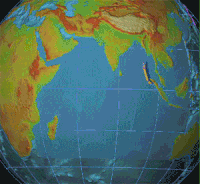
Photo from wikipedia
Seismology is a data rich and data-driven science. Application of machine learning for gaining new insights from seismic data is a rapidly evolving sub-field of seismology. The availability of a… Click to show full abstract
Seismology is a data rich and data-driven science. Application of machine learning for gaining new insights from seismic data is a rapidly evolving sub-field of seismology. The availability of a large amount of seismic data and computational resources, together with the development of advanced techniques can foster more robust models and algorithms to process and analyze seismic signals. Known examples or labeled data sets, are the essential requisite for building supervised models. Seismology has labeled data, but the reliability of those labels is highly variable, and the lack of high-quality labeled data sets to serve as ground truth as well as the lack of standard benchmarks are obstacles to more rapid progress. In this paper we present a high-quality, large-scale, and global data set of local earthquake and non-earthquake signals recorded by seismic instruments. The data set in its current state contains two categories: (1) local earthquake waveforms (recorded at “local” distances within 350 km of earthquakes) and (2) seismic noise waveforms that are free of earthquake signals. Together these data comprise ~ 1.2 million time series or more than 19,000 hours of seismic signal recordings. Constructing such a large-scale database with reliable labels is a challenging task. Here, we present the properties of the data set, describe the data collection, quality control procedures, and processing steps we undertook to insure accurate labeling, and discuss potential applications. We hope that the scale and accuracy of STEAD presents new and unparalleled opportunities to researchers in the seismological community and beyond.
Journal Title: IEEE Access
Year Published: 2019
Link to full text (if available)
Share on Social Media: Sign Up to like & get
recommendations!